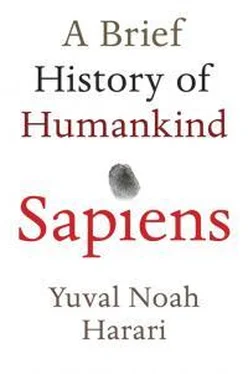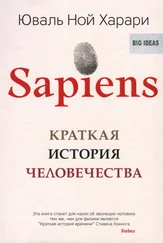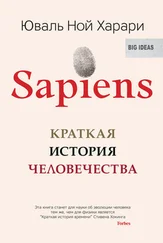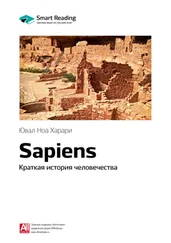In order to use wealth it is not enough just to store it. It often needs to be transported from place to place. Some forms of wealth, such as real estate, cannot be transported at all. Commodities such as wheat and rice can be transported only with difficulty. Imagine a wealthy farmer living in a moneyless land who emigrates to a distant province. His wealth consists mainly of his house and rice paddies. The farmer cannot take with him the house or the paddies. He might exchange them for tons of rice, but it would be very burdensome and expensive to transport all that rice. Money solves these problems. The farmer can sell his property in exchange for a sack of cowry shells, which he can easily carry wherever he goes.
Because money can convert, store and transport wealth easily and cheaply, it made a vital contribution to the appearance of complex commercial networks and dynamic markets. Without money, commercial networks and markets would have been doomed to remain very limited in their size, complexity and dynamism.
How Does Money Work?
Cowry shells and dollars have value only in our common imagination. Their worth is not inherent in the chemical structure of the shells and paper, or their colour, or their shape. In other words, money isn’t a material reality – it is a psychological construct. It works by converting matter into mind. But why does it succeed? Why should anyone be willing to exchange a fertile rice paddy for a handful of useless cowry shells? Why are you willing to flip hamburgers, sell health insurance or babysit three obnoxious brats when all you get for your exertions is a few pieces of coloured paper?
People are willing to do such things when they trust the figments of their collective imagination. Trust is the raw material from which all types of money are minted. When a wealthy farmer sold his possessions for a sack of cowry shells and travelled with them to another province, he trusted that upon reaching his destination other people would be willing to sell him rice, houses and fields in exchange for the shells. Money is accordingly a system of mutual trust, and not just any system of mutual trust: money is the most universal and most efficient system of mutual trust ever devised .
What created this trust was a very complex and long-term network of political, social and economic relations. Why do I believe in the cowry shell or gold coin or dollar bill? Because my neighbours believe in them. And my neighbours believe in them because I believe in them. And we all believe in them because our king believes in them and demands them in taxes, and because our priest believes in them and demands them in tithes. Take a dollar bill and look at it carefully. You will see that it is simply a colourful piece of paper with the signature of the US secretary of the treasury on one side, and the slogan ‘In God We Trust’ on the other. We accept the dollar in payment, because we trust in God and the US secretary of the treasury. The crucial role of trust explains why our financial systems are so tightly bound up with our political, social and ideological systems, why financial crises are often triggered by political developments, and why the stock market can rise or fall depending on the way traders feel on a particular morning.
Initially, when the first versions of money were created, people didn’t have this sort of trust, so it was necessary to define as ‘money’ things that had real intrinsic value. History’s first known money Sumerian barley money – is a good example. It appeared in Sumer around 3000 BC, at the same time and place, and under the same circumstances, in which writing appeared. Just as writing developed to answer the needs of intensifying administrative activities, so barley money developed to answer the needs of intensifying economic activities.
Barley money was simply barley – fixed amounts of barley grains used as a universal measure for evaluating and exchanging all other goods and services. The most common measurement was the sila, equivalent to roughly one litre. Standardised bowls, each capable of containing one sila, were mass-produced so that whenever people needed to buy or sell anything, it was easy to measure the necessary amounts of barley. Salaries, too, were set and paid in silas of barley. A male labourer earned sixty silas a month, a female labourer thirty silas. A foreman could earn between 1,200 and 5,000 silas. Not even the most ravenous foreman could eat 5,000 litres of barley a month, but he could use the silas he didn’t eat to buy all sorts of other commodities – oil, goats, slaves, and something else to eat besides barley. 8
Even though barley has intrinsic value, it was not easy to convince people to use it as money rather than as just another commodity. In order to understand why, just think what would happen if you took a sack full of barley to your local shopping centre, and tried to buy a shirt or a pizza. The vendors would probably call security. Still, it was somewhat easier to build trust in barley as the first type of money, because barley has an inherent biological value. Humans can eat it. On the other hand, it was difficult to store and transport barley. The real breakthrough in monetary history occurred when people gained trust in money that lacked inherent value, but was easier to store and transport. Such money appeared in ancient Mesopotamia in the middle of the third millennium BC. This was the silver shekel.
The silver shekel was not a coin, but rather 8.33 grams of silver. When Hammurabi’s Code declared that a superior man who killed a slave woman must pay her owner twenty silver shekels, it meant that he had to pay 166 grams of silver, not twenty coins. Most monetary terms in the Old Testament are given in terms of silver rather than coins. Josephs brothers sold him to the Ishmaelites for twenty silver shekels, or rather 166 grams of silver (the same price as a slave woman – he was a youth, after all).
Unlike the barley sila, the silver shekel had no inherent value. You cannot eat, drink or clothe yourself in silver, and it’s too soft for making useful tools – ploughshares or swords of silver would crumple almost as fast as ones made out of aluminium foil. When they are used for anything, silver and gold are made into jewellery, crowns and other status symbols – luxury goods that members of a particular culture identify with high social status. Their value is purely cultural.
Set weights of precious metals eventually gave birth to coins. The first coins in history were struck around 640 BC by King Alyattes of Lydia, in western Anatolia. These coins had a standardised weight of gold or silver, and were imprinted with an identification mark. The mark testified to two things. First, it indicated how much precious metal the coin contained. Second, it identified the authority that issued the coin and that guaranteed its contents. Almost all coins in use today are descendants of the Lydian coins.
Coins had two important advantages over unmarked metal ingots. First, the latter had to be weighed for every transaction. Second, weighing the ingot is not enough. How does the shoemaker know that the silver ingot I put down for my boots is really made of pure silver, and not of lead covered on the outside by a thin silver coating? Coins help solve these problems. The mark imprinted on them testifies to their exact value, so the shoemaker doesn’t have to keep a scale on his cash register. More importantly, the mark on the coin is the signature of some political authority that guarantees the coin’s value.
The shape and size of the mark varied tremendously throughout history, but the message was always the same: ‘I, the Great King So-And-So, give you my personal word that this metal disc contains exactly five grams of gold. If anyone dares counterfeit this coin, it means he is fabricating my own signature, which would be a blot on my reputation. I will punish such a crime with the utmost severity.’ That’s why counterfeiting money has always been considered a much more serious crime than other acts of deception. Counterfeiting is not just cheating – it’s a breach of sovereignty, an act of subversion against the power, privileges and person of the king. The legal term is lese-majesty (violating majesty), and was typically punished by torture and death. As long as people trusted the power and integrity of the king, they trusted his coins. Total strangers could easily agree on the worth of a Roman denarius coin, because they trusted the power and integrity of the Roman emperor, whose name and picture adorned it.
Читать дальше



![Юваль Ной Харари - Sapiens. Краткая история человечества [litres]](/books/34310/yuval-noj-harari-sapiens-kratkaya-istoriya-cheloveche-thumb.webp)





![Юваль Ной Харари - 21 урок для XXI века [Версия с комментированными отличиями перевода]](/books/412481/yuval-noj-harari-21-urok-dlya-xxi-veka-versiya-s-ko-thumb.webp)


